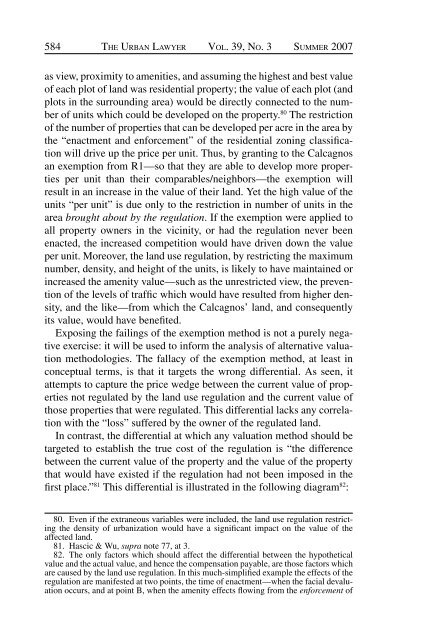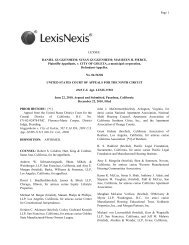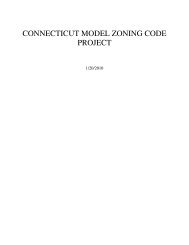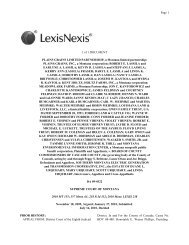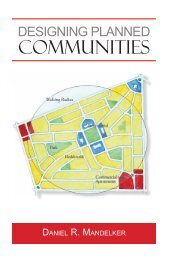Through a Glass Darkly: Measuring Loss Under ... - Land Use Law
Through a Glass Darkly: Measuring Loss Under ... - Land Use Law
Through a Glass Darkly: Measuring Loss Under ... - Land Use Law
You also want an ePaper? Increase the reach of your titles
YUMPU automatically turns print PDFs into web optimized ePapers that Google loves.
584 THE URBAN LAWYER VOL. 39, NO. 3 SUMMER 2007<br />
as view, proximity to amenities, and assuming the highest and best value<br />
of each plot of land was residential property; the value of each plot (and<br />
plots in the surrounding area) would be directly connected to the number<br />
of units which could be developed on the property. 80 The restriction<br />
of the number of properties that can be developed per acre in the area by<br />
the “enactment and enforcement” of the residential zoning classification<br />
will drive up the price per unit. Thus, by granting to the Calcagnos<br />
an exemption from R1—so that they are able to develop more properties<br />
per unit than their comparables/neighbors—the exemption will<br />
result in an increase in the value of their land. Yet the high value of the<br />
units “per unit” is due only to the restriction in number of units in the<br />
area brought about by the regulation. If the exemption were applied to<br />
all property owners in the vicinity, or had the regulation never been<br />
enacted, the increased competition would have driven down the value<br />
per unit. Moreover, the land use regulation, by restricting the maximum<br />
number, density, and height of the units, is likely to have maintained or<br />
increased the amenity value—such as the unrestricted view, the prevention<br />
of the levels of traffic which would have resulted from higher density,<br />
and the like—from which the Calcagnos’ land, and consequently<br />
its value, would have benefited.<br />
Exposing the failings of the exemption method is not a purely negative<br />
exercise: it will be used to inform the analysis of alternative valuation<br />
methodologies. The fallacy of the exemption method, at least in<br />
conceptual terms, is that it targets the wrong differential. As seen, it<br />
attempts to capture the price wedge between the current value of properties<br />
not regulated by the land use regulation and the current value of<br />
those properties that were regulated. This differential lacks any correlation<br />
with the “loss” suffered by the owner of the regulated land.<br />
In contrast, the differential at which any valuation method should be<br />
targeted to establish the true cost of the regulation is “the difference<br />
between the current value of the property and the value of the property<br />
that would have existed if the regulation had not been imposed in the<br />
first place.” 81 This differential is illustrated in the following diagram 82 :<br />
80. Even if the extraneous variables were included, the land use regulation restricting<br />
the density of urbanization would have a significant impact on the value of the<br />
affected land.<br />
81. Hascic & Wu, supra note 77, at 3.<br />
82. The only factors which should affect the differential between the hypothetical<br />
value and the actual value, and hence the compensation payable, are those factors which<br />
are caused by the land use regulation. In this much-simplified example the effects of the<br />
regulation are manifested at two points, the time of enactment—when the facial devaluation<br />
occurs, and at point B, when the amenity effects flowing from the enforcement of<br />
ABA-TUL-07-0701-Sullivan.indd 584<br />
9/18/07 10:43:40 AM


